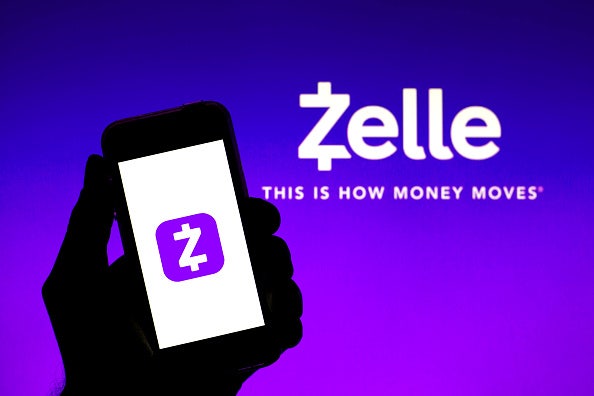
Table of Contents
Show more
Show less
More people are buying and selling online, and e-commerce revenue keeps increasing, so it’s no surprise that e-commerce is set to bring in $5.9 trillion at the end of 2023. But what exactly is e-commerce? Though the simple answer is that e-commerce, or electronic commerce, is the online exchange of goods and services, let’s break down what it is, how it works, and how to get started with your own e-commerce business.
Definition of E-Commerce
E-commerce (electronic commerce) is the exchange of goods and services and the transmission of funds and data over the internet. E-commerce relies on technology and digital platforms, including websites, mobile apps and social media to make buying and selling possible.
Advantages of E-Commerce
According to Statista data, India’s e-commerce market size is expected to reach around US$ 350 billion by the year 2030, up from around US$ 74 billion in the year 2022, mainly due to the swift expansion of e-commerce in tier-2 and tier-3 cities.
Global Marketing Reach
Unlike a physical store that limits a business to its geographical area, an e-commerce website allows you to reach customers anywhere. Once customers can place orders online and you can ship a product to their location or provide a service, there’s no limit to your reach.
Lower Operating Costs
Building an e-commerce website and maintaining it is cheaper than running a brick-and-mortar store. You won’t need to rent retail space or a warehouse or worry about building maintenance or property insurance. Plus, advertising online is cheaper, especially with organic blog posts and social media that can drive traffic to your site.
Featured Partners
Price Per Month
From INR 165.53 ($1.99) onwards
Benefits
Free CDN, Domain and SSL for 1st year
Features
10 GB SSD Storage and 1 Website
Price per month
INR 149 onwards
Features
Drag-and-Drop Editor, Free Domain and Unlimited Free SSL
Price per month
INR 219 ($2.64) per month
Benefits
Free domain and SSL for 1st year
Features
10GB SSD Storage and Basic email included
Convenience and Flexibility
E-commerce websites provide flexibility for their owners and customers. You can offer a wide selection of products while customers make round-the-clock purchases, regardless of their time zone or location. And as a business owner, you can earn even while sleeping.
Easier Management
Customer segmentation and other marketing and sales processes are easier for an e-commerce business. For instance, access to customer data (search and purchase history) combined with artificial intelligence (AI) will give you insight into your target market and help you streamline your marketing strategies, which increases your revenue. Also, you can expand your e-commerce business without the need to relocate or renovate a physical store.
Disadvantages of E-Commerce
Some businesses avoid e-commerce for the following reasons.
Limited Face-to-Face Interaction
Since there’s limited product experience, customers tend to buy products that don’t meet their expectations or are challenging to use. For instance, a shoe might not fit a customer, or they become frustrated when they find it hard to use a product. These expectation issues lead to buying indecisions or refunds that can mess with a store’s inventory or even cost it some money.
Technical Challenges
Since e-commerce websites rely on technology, if you experience glitches, a website crash, a cybersecurity attack or any of your integrated platforms (web builder, web hosting, inventory management software, etc.) experiences downtime, your business suffers. Your website won’t allow buying or selling, let alone completing a purchase.
Data Security Concerns
E-commerce websites often store customers’ card information to allow faster purchases in the future, so if a site is hacked, threat actors can acquire such information. Customer data is compromised, and the website loses sales from a damaged reputation. That’s if the store isn’t even closed down.
4 Major Types of E-Commerce
E-commerce takes several forms. A company can sell to its customers, other businesses or the government. Customers can also sell to businesses, government agencies or other customers. However, there are four primary types of e-commerce that describe the electronic transactions that can take place over the internet.
1. Business to Consumer (B2C)
This popular e-commerce model involves companies selling their products or services directly to the end user, the consumer who needs it.
2. Business to Business (B2B)
This e-commerce type refers to the exchange that occurs between businesses. Here, an e-commerce business sells to another business. An example is software-as-a-service, such as web hosting or accounting software for smooth business operations. B2B e-commerce can also be raw materials or machinery exchange over the internet.
3. Consumer to Consumer (C2C)
Some e-commerce platforms are like digital marketplaces connecting consumers. An example is eBay, which allows a consumer to list and sell their products to another consumer.
4. Consumer to Business (C2B)
For this type of e-commerce, consumers sell their products and services to businesses. For example, a photographer sells their photos to companies so that they can use them for ads or social media campaigns.
How E-Commerce Works
E-commerce uses electronic channels to connect buyers and sellers. It works like a physical store—customers visit your e-commerce store to browse your products and make a purchase. However, e-commerce involves back-and-forth communication between your website and its server host.
Typically, e-commerce follows these steps:
- A business lists its products and services.
- A customer browses the catalog to choose what they want and then adds it to the cart.
- The customer pays for the item using any of the available payment options.
- The business receives the order on its dashboard.
- The payment is processed, and the order is approved.
- An order manager sends the order to the fulfillment department or warehouse to authorize a dispatch.
- The customer receives the notification of order approval and other details, including shipping and tracking information.
- The business ships the product or renders the required service.
Top E-Commerce Platforms
There are several platforms for building your e-commerce store, such as Shopify, Squarespace, and Wix. Every website builder varies in terms of ease of use, price, features and customization capabilities, so it’s important to pinpoint which is right for your online store. The top e-commerce platforms are detailed below.
Squarespace
Squarespace has the features you need to run an e-commerce website, so you won’t need to install a plugin. Its e-commerce builder starts at around INR 1,912 per month and offers you a wide range of free template designs. You can also customize your e-commerce website with CSS or JavaScript, and sell as many products as you want. Squarespace also offers e-commerce analytics and the ability to tag your products on Instagram.
You’ll also get a shipping calculator to calculate and show customers their shipping fees. You can also send automated emails to customers who abandon their carts. But don’t expect to get all these features on lower plans. Also, note that only the Commerce plans exempt businesses from the additional 3% fee on each transaction.
Shopify
Shopify provides what you need to launch your e-commerce store, even without design experience. This e-commerce website builder also enables smooth integration with up to 6,000 apps, making it easy to run your website. Its plans offer unlimited storage and bandwidth, multiple staff accounts, point-of-sale (POS) access, abandoned cart recovery, shipping discounts, free SSL certificate and shipping label printing. You can also sell as many products as you want.
Shopify’s higher plans offer advanced features such as analytics and reports, and you’ll pay lower fees on transactions, credit card processing and shipping. You can get started with its three-day trial opportunity.
Wix
Wix offers more than 500 free templates and allows you to customize your website with editing tools that make your website responsive on different devices. Depending on your plan, you can sell unlimited products, recover abandoned carts, manage inventory and complete payments. And you’ll get priority customer support, unlimited dropshipping, customized reports and a customer loyalty program to make running an e-commerce business easy and relate with your customers better.
This e-commerce website builder also has built-in SEO tools for improving your site’s ranking, and it integrates smoothly with hundreds of apps, allowing you to add features to your website without coding knowledge. Wix also offers a free version, but don’t expect much from it. Also, you’ll need to pay INR 1,599 per month to enjoy unlimited storage, which can withstand a content-heavy e-commerce store.
Featured Partners
Price Per Month
From INR 165.53 ($1.99) onwards
Benefits
Free CDN, Domain and SSL for 1st year
Features
10 GB SSD Storage and 1 Website
Price per month
INR 149 onwards
Features
Drag-and-Drop Editor, Free Domain and Unlimited Free SSL
Price per month
INR 219 ($2.64) per month
Benefits
Free domain and SSL for 1st year
Features
10GB SSD Storage and Basic email included
E-Commerce Examples
For a better understanding of what e-commerce is and what an e-commerce site should look like, here are a few e-commerce examples.
Aspect Home sells office furniture, including customizable work chairs and desks, to those working from home. This e-commerce store was built with Squarespace and has an easy-to-navigate layout. You’ll find category headers, which make it easy for you to locate an item. Each item also has its pricing and descriptions, such as height, width and color, to tell you what’s available, and you can customize the products.
This e-commerce website’s store policies are displayed at the foot of every page, making it visible to visitors. There’s also a “Contact us” footer that takes you directly to a support ticket, phone number and email address, in case you need help.
Vivi et Margot
Vivi et Margot is an example of a Wix e-commerce website. The store sells clothing, jewelry and home items to individuals and businesses. It has the key features of an e-commerce website, with its organized layout of product categories and readable fonts. Vivi et Margot allows you to browse categories such as kitchen, textile, clothing, jewelry and soaps, and most products have full descriptions.
You’ll see their size, color, origin and even how to use or handle the product.
There’s also a “You might also like” feature under the products, which takes you to related items. And the store’s policy stays visible at the foot of each page, while another footer takes you directly to the contact form for support. This Wix e-commerce website also makes it easy to pay for items, as it offers up to four interest-free payments via PayPal.
Modern Market
Built with Shopify, Modern Market offers photographers a selection of tools and designs, including Lightroom presets, online lessons, legal forms and page templates. This B2B and B2C e-commerce website uses a minimal design to showcase its offerings without confusing visitors. The product pages use high-quality images to show you what you get in a preset, and it allows you to preview as many sets as you want.
It also has videos showing you how to use them, but it doesn’t stop there. There’s an FAQs section to answer your questions. Also, the e-commerce website shares testimonials that assure you that your purchase will be worth it.
Bottom Line
With India’s population being more than 1.4 billion and a fast-growing economy has changed the way India shops. The total number of online shoppers is estimated to increase to 427 million by the year 2027. Still, e-commerce can be challenging. So, consider its benefits and drawbacks, and work on incorporating important features on your website. You can also glean from successful e-commerce examples to build yours.
Frequently Asked Questions (FAQs)
What is an e-commerce business?
An e-commerce business sells products and services using digital methods. An e-commerce business may also have a physical store. Examples of e-commerce businesses are online retailers, digital marketplaces and subscription services.
What are examples of e-commerce businesses?
E-commerce businesses can be between businesses and their customers or two businesses. It can also be an exchange between individual customers. Amazon, Alibaba, Walmart, Wayfair, eBay and OLX are all examples of e-commerce businesses.
What is the main purpose of e-commerce?
The purpose of e-commerce is simple—to facilitate online buying and selling. Whether you want to sell or purchase a book, a pair of shoes or a service that provides smooth running of daily operations, an e-commerce platform allows you to do that.
How much does it cost to start e-commerce?
The cost of starting an online store depends on the kind of business you want to do and the platform you choose. But generally, expect to spend between a few hundred and several thousand rupees for domain registration, web hosting, web development, secure sockets layer, payment processing, security and maintenance processes.







